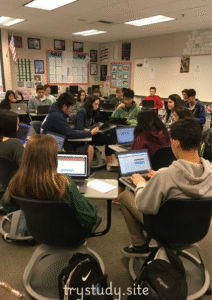
One concept is becoming more and more important in a fast changing educational scene: Direct Education Services. Direct education services could be the answer you have been looking for whether your needs are those of a parent wanting for specific help for their child, a teacher looking for efficient teaching tools, or a school administrator trying for inclusive academic policies.
Let’s investigate more closely what direct education services are, why they matter, how they are provided, and how they are altering the landscape for students of all stripes.
Direct educational services are what?
Direct education services are those directed instructional activities given to students by licenced educators. Among these offerings are one-on-one tutoring, small-group training, speech therapy, occupational therapy, counselling, and special education courses.
Said another way, it is practical instructional help aimed for the particular requirements of the student, whether in or outside of conventional classroom surroundings.
Often, these offerings come from:
Schools—especially for students enrolled in Individualised Education Programs or IEPs—especially
Private teaching centres
Internet learning environments
cooperatives for homeschooling
Services in special education
Why Are Direct Instruction Programs Crucially Important?
Direct education programs meet students’ particular needs and learning styles. A teacher in a conventional classroom could not be able to cover every student’s learning deficiency. Direct services then find application here.
One aspect of personalised learning is
Every pupil learns differently. Customised techniques catered to every student’s skills and shortcomings come from direct education services.
2. Early Correction
Early access to direct treatments like speech or occupational therapy helps children with developmental delays or learning difficulties greatly. Early encouragement usually results in better social and academic performance.
3. Enhancement of Academic Performance
When given focused training, students who struggle in fundamental courses including arithmetic, science, or reading typically demonstrate significant improvement.
4. Assistance for Varinct Learners
Students with disabilities, English language learners (ELLs), or those from underprivileged areas depend on direct services absolutely.

Direct Educational Service Examples
Let’s look at some instances of what directly falls under the purview of direct education offerings:
Under an IEP, special education services could include adapted physical education, behavioural therapy, and individualised instruction with an eye towards behaviour.
Direct delivery of speech and language therapy—that of a speech-language pathologist—helps with communication difficulties.
Programs designed to treat dyslexia one-on-one use Orton-Gillingham or Wilson Reading Systems.
Math tutoring is focused, individualised education given outside of the classroom.
Real-time Zoom or Google Meet sessions whereby a teacher delivers live instruction online.
Direct Versus Indirect Instruction Services
One important difference in the field of education is direct vs indirect services.
Features Direct Services Defining Indirect Services Intervention with the student or direct instruction Support services free of direct student interaction
Samples One-on-one tutoring, therapeutic meetings Talking with teachers, curriculum development
Concentrate Student-centered: Centred on teachers or support staff
Direct services are interactive, intervention-based; indirect services are strategic and advisory.
Who Offer Direct Instruction Services?
Usually, licensed experts provide these services; among them are:
Special Education Teachers
Teachers in general education with particular training
SLPs, or speech-language pathologists:
occupational therapists
Physical Therapists
School psychologists
Behavioural Scientists
Educational Therapists and Private Teachers
Every expert customises their method depending on IEP goals, assessment results, and continuous development tracking.
Advantages of Direct Instruction Services
1. Enhanced Educational Performance
Students get specialised lessons and comments right away that fit their learning deficiencies.
2. Increase in Confidence
Customised help can enable pupils to feel less stressed about their homework and more capable.
3. Improved Participation
Instruction is individualised and interactive, hence pupils are more likely to be involved and driven.
4. Instruction Motivated by Data
Tracking progress allows real-time teaching to be changed depending on what is working and not working.
5. Assistance to Families
Many times, parents get tools, updates, and ideas to help learning at home.
School Direct Education Service Implementation:
Direct services usually described in public school systems are found in an IEP or 504 Plan. Schools follow these guidelines:
Evaluation: The student’s need for help is identified.
Developing an Individualised Education Program with particular objectives, a team forms.
Service Delivery: Professionals start interacting directly with the learner from a timetable they create.
Constant evaluation guarantees the efficiency of the services.
Every year the IEP team meets to change objectives and services.
Services for Online Direct Education: The New Frontier
Online direct education services are growingly common as digital platforms develop. Services ranging from teletherapy to remote tutoring to virtual special education let children get help anywhere.
Benefits include:
Scheduling requires flexibility.
Availability of a larger professional pool
In some circumstances, reduced costs.
Real-time data reporting and tracking
Well-known sites with similar capabilities are:
Learning Presence
Outclass
Varsity Consultors
Instructor.com
Specialised Ed Resource
Difficulties and Issues and Thoughts
Direct education programs have certain difficulties even if they offer advantages:
Cost: Should insurance or the school not cover private treatments, they can be costly.
Access: Rural or low-income neighbourhoods might not have trained experts or resources.
Not every provider provides the same degree of training or quality.
Fitting sessions into a child’s school day or after-hours can be difficult.
Schools and families should work closely to overcome these obstacles, look at non-profit or grant-based services, or seek money through IEPs.
Direct Instruction Services for Adults
It’s not only for little ones! Furthermore benefiting adults from direct education programs are especially in:
Getting ready for GED
English as a Second Language programs, ESL
Development of the workforce through training
Tutoring in college readiness
Whether going back to school or improving their skills for the job, adult learners flourish with customised help.
The Evolution of Direct Education Services
The future of direct education services seems bright as educational demands vary and technology develops.
Key Trends: More EdTech and artificial intelligence used for progress monitoring
Models of blended learning integrating online and face-to–face instruction
Teletherapy is becoming increasingly accepted.
Funding growth via government initiatives and academic grants
More focus on mental health and social-emotional learning (SEL) inside direct services
Direct Education Services Provider SEO Best Practices
Here are some SEO techniques to increase your internet presence should you be a company or institution providing direct educational services:
1. Apply long-tail keywords.
Target phrases such as:
“DirectSpeak therapy services for children”
“ONE-on-one reading intervention”
“Online tutoring under qualified teachers”
2. Create location-based page models.
Houston, Texas: “Direct Education Services”
“Special education help in Los Angeles”
3. Emphasise Success Stories Here
To establish power and confidence, use case studies, testimonies, and progress charts.
4. Blog Consistently
Create material around frequently asked questions like:
“What is an IPD?”
“Contrast between direct and indirect services”
“How to find a certified special education tutor”?
5. Refine for Mobile Devices
From their phones, many parents and teachers hunt. Check that your website is responsive.
Final Thoughts
One of the most efficient and customised approaches to help learning in the modern society is direct education programs. Customised instruction counts for a small kid needing speech therapy, an adolescent struggling with algebra, and an adult learning English.
As we continue to embrace personalized learning, investing in quality direct education services will ensure that no learner is left behind.







